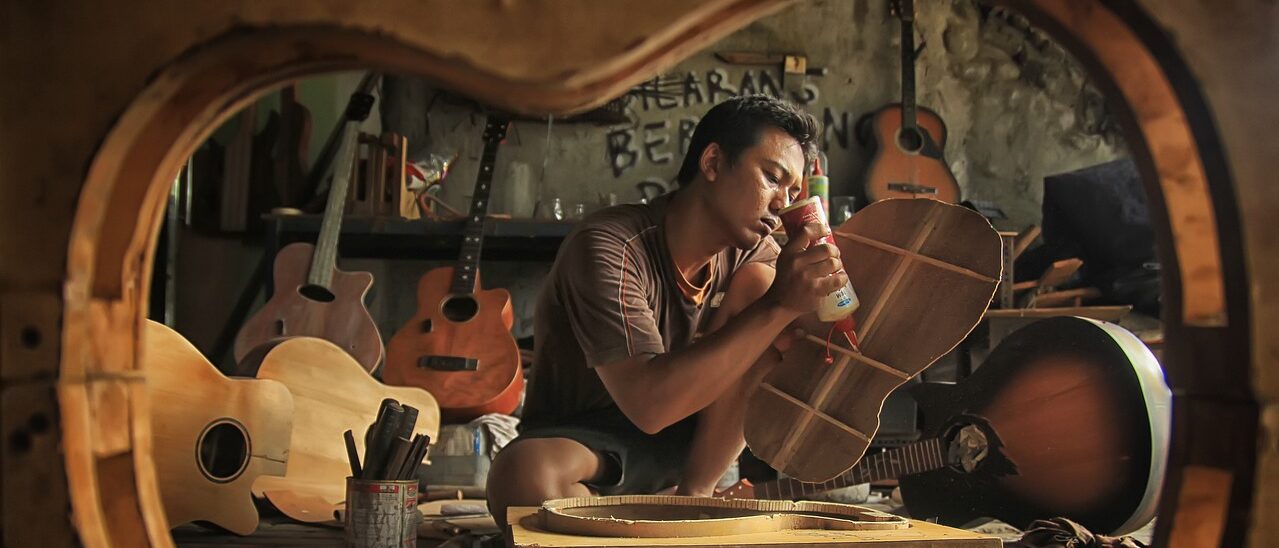Introduction & Origins
Music is human. Of this much, we are certain.
The sounds of music have been with us for millennia. Our ability to create music, to find harmony where once there had been discord, remains a defining factor of our humanity. Music is found in every culture across the globe.
Throughout human history, music has evolved and changed. For much of its history, music was ephemeral. It was played, and with the fading of the final note, it lived on only in memory. With the advent of recording technology, a rendition of a song could be repeated again and again. In the digital age, music has taken on a different, more portable life. Often, it has become a solo, individual experience.
We seek to revive the communal aspect of listening to music. The connections and bonds formed by sharing music together endure long after the last note sounds. We seek to create a virtual space where music can be enjoyed and examined for its capacity to produce great emotional outpourings of joy, sorrow, grief, and ultimately, catharsis.
Sounds of Music takes its name from The Sound of Music, a 1959 Broadway musical by Richard Rodgers, composer, and Oscar Hammerstein II, lyricist. The story was loosely based on a memoir about the von Trapps, a large family that acquired a substantial reputation for singing in their native Austria before they fled the country in 1938. As a family unit, they achieved immense popularity in the United States through concert tours and recordings, and eventually, they settled permanently in Vermont. The 1965 movie of the same name, starring Julie Andrews and Christopher Plummer, won five Oscars. Among the many tunes from the show that became popular standards are “Climb Ev’ry Mountain,” “You Are Sixteen Going on Seventeen,” “Edelweiss,” “Do, Re, Mi,” and “My Favorite Things.”
The sounds of music mean, to us, the human voice, every instrument capable of creating music, and synthetic musical instruments. We have focused on the former two of these three.
Our Goals
Music is the instrument through which we are inviting members of our community to come together and form lasting, meaningful connections. Our primary target audience has consisted of elderly individuals, a population that is vulnerable to becoming isolated and lonely.
The Sounds of Music is very much about people. People have informed every part of our user-centric design, from our website to our pilot programs to our Accessibility Toolkits. We have defined the Sounds of Music by our target users amongst the elderly population, and designed with the extreme user in mind.
We are committed to making the Sounds of Music accessible to all who might wish to partake in our music enrichment program. Music should be for everyone and anyone who wishes to listen, and we wish for our communal experience to be an uplifting, joyous one.
We believe in creating a safe, inclusive space for those who enjoy music to discuss memories that arise, connections that present themselves, and other elements of the musical experience.
We wish for our audience to come away from the pilot program smiling, feeling connected, and engaged. Since the COVID-19 pandemic, elderly individuals have not experienced the type of connections that they once enjoyed freely and without concern for their health.
We seek to remedy this by providing an online, virtual environment that is both a safe space for sharing music and memories, as well as a community-building experience during which new friendships can be formed and maintained.
Our ultimate goal is to create an online community through which the sounds of music foster new friendships and fresh perspectives. We seek to make this experience available to all who wish to partake in it. We also wish for this experience to be both customizable and easily duplicated in almost any setting, both private or public.


